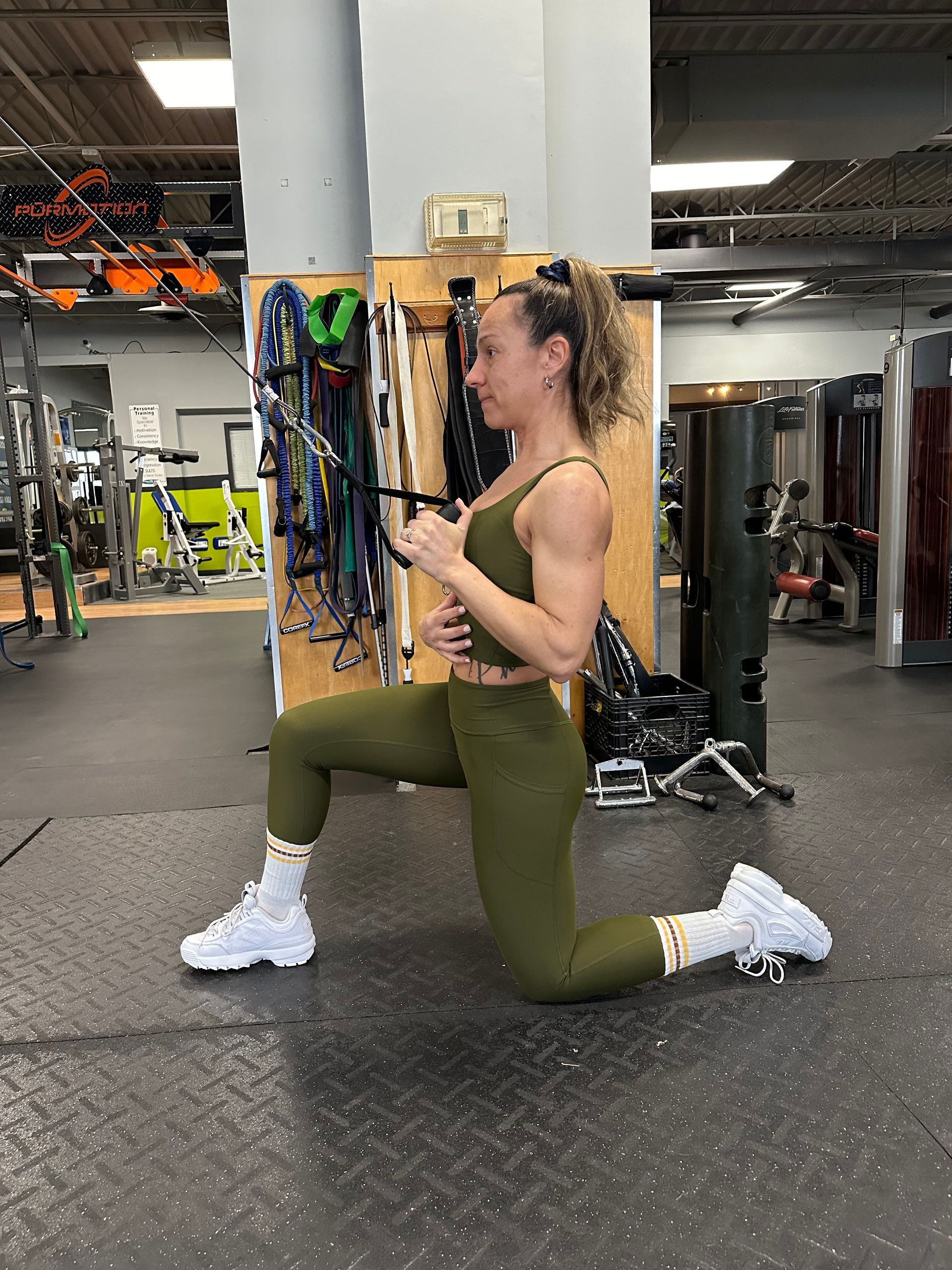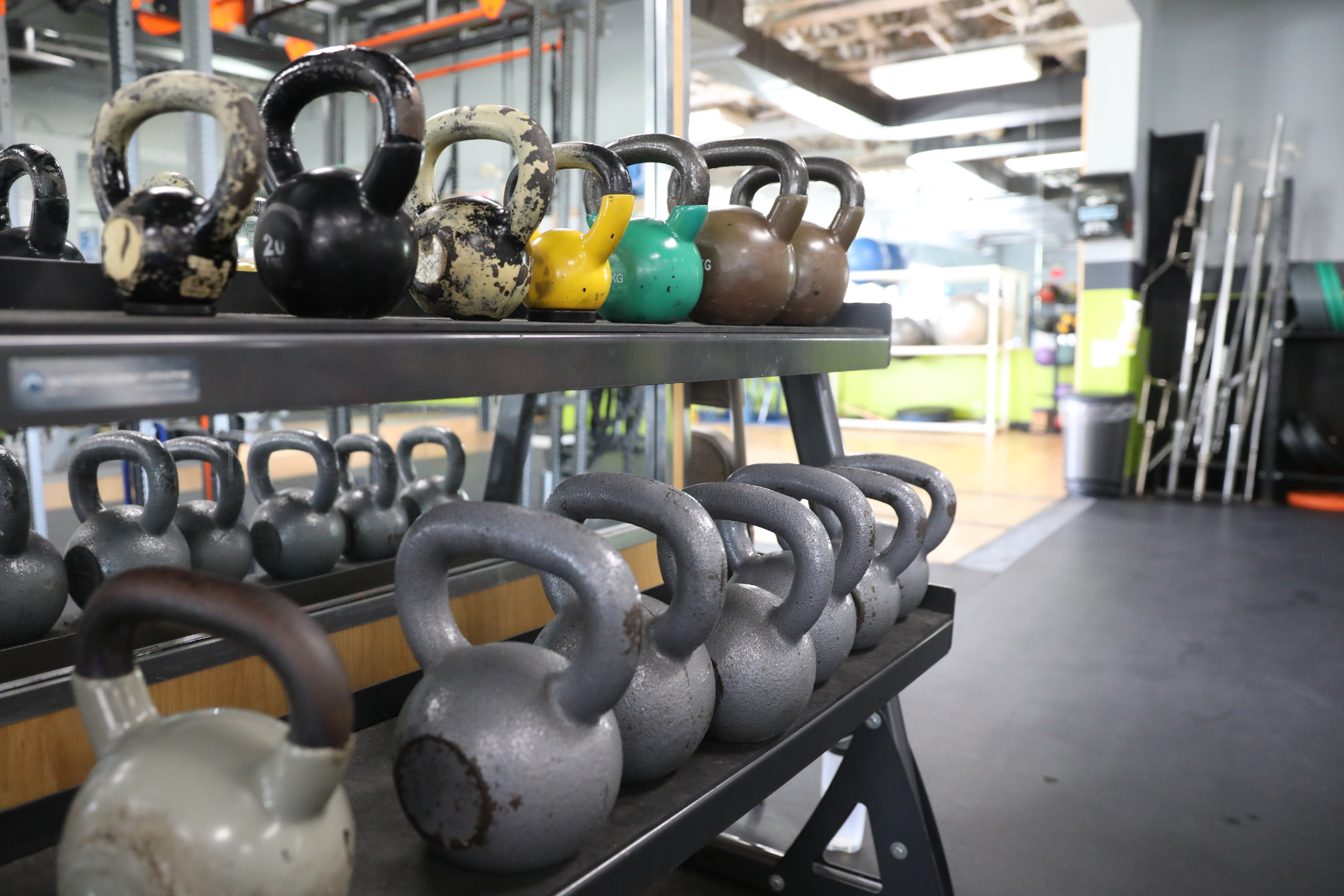ALL THE BREAD YOU KNEAD!
KERRI SHERK'S, RD, BEST AND WORST KINDS OF BREAD
Bread wheat species were developed and hybridized 8,500-9,000 years ago (Evolution and origin of bread wheat, Feldman, 2022). However, other research shows that utensils and pottery were used well before that time (Africa and the near East, Randi Haaland, 2006), indicating that other grains have likely been in existence much longer than 9,000 years. In fact, we do know that humans were grinding cereal grains 30,000 years ago (Evolution and origin of bread wheat, Feldman, 2022). Overall, bread has been a staple in our diets for thousands of years and bread wheat has had to evolve many times to withstand climatic changes including droughts, heavy rains as well as many pests. Bread wheat is a good source of carbohydrates (energy), protein, fibre, B vitamins, minerals, and phytochemicals. However, the processing of wheat, particularly in the 20th and 21st centuries, has compromised this nutritional value.
Many people consider bread to be a bad or unhealthy food. As a practicing dietitian for 25 years, I believe bread is still a good part of a healthy meal plan. I have seen fat being described as the villain 20-25 years ago… and now carbohydrates and bread are the bad guys. I disagree. The negativity towards carbohydrates, namely bread for the sake of this article has been exaggerated (unless you are certifiably allergic to bread, gluten or wheat). What I see and understand to the best of my knowledge is that people either eat too much bread or none at all. And balance is the key to all things. Like it or not bread is a big staple in our diets, from toast for breakfast, sandwiches for lunch, stuffing for turkey and garlic bread at dinner. Choosing a nutritious option for bread can be daunting; we often find ourselves overwhelmed with options and it can be difficult to know what to look for to find the healthiest choice. To help make your shopping experience easier I have put together a list of the best and worst breads to look for when you’re out for your next grocery shop. Keep in mind here as well, that I have looked at breads only. Not wraps, not pitas or hamburger buns, bagels, English muffins or pizza crust. Just good ol’ bread from the grocery store. I have also not covered ALL breads available in all grocery stores. If you have a bread that you would like critiqued, contact me, happy to chat with you.
But first - a little background on why! While the manufacturing of different breads is similar, they differ in ingredients. As I stated above, I reviewed many breads available to surmise the best and worst ones to buy. The criteria in this review includes: type of bread wheat, amount of fibre per slice, type of fibre, amount of nutrients including protein, added sugars, added fats, and the size/weight of the slice.
In terms of the
type of bread to look for, whole grains, sprouted grains, or sourdough bread are superior to enriched white flour. During the refining process, grains (wheat) lose their nutritional value; all except the energy portion. The 3 parts of the grain are the bran, the germ, and the endosperm. The bran is the outer layer, which provides the fibre; the part of the grain that soaks up the water and slows the digestion process, which allows your body more time to absorb beneficial nutrients. The bran also contains B vitamins, antioxidants, and minerals such as iron, zinc, and magnesium. The germ of the grain is the core where growth occurs, making it full of healthy fats, vitamin E, and more B vitamins. Lastly, the endosperm is the innermost layer of the grain, which contains the carbohydrate, protein, and more B vitamins and minerals. As you can expect,
whole grains are exactly that;
whole. They contain all the parts and a well-rounded handful of nutrients that provide health benefits to you when consumed. When grains are refined, you lose a lot of those components and digestion becomes less favourable due to less fibre. They are no longer whole-grain but instead, to meet national guidelines, have to be enriched (have the nutrients added back that were there to begin with).
Sprouted grains are whole grains that have been nurtured in a warm and moist environment until they have begun to sprout and then used in the baking of breads. The sprouting process allows the grain to break down some of the starch, making it more easily digestible for those that have a hard time breaking down the whole grain. Grains that have sprouted are in the middle of a germinating process. During this process of the grain’s life cycle, in addition to breaking down the starch, it makes the nutrients in the grain more bioavailable. There’s a nutrient in grains called phytate that, when ingested, decreases the absorption of vitamins and minerals in the small intestine. When phytate is broken down in the germination process, it makes all the vitamins and minerals like iron, magnesium, vitamin B, vitamin E, zinc, and protein, more easily digested and absorbed into our bodies. Hooray for more nutrients!
Sourdough is a type of bread made with naturally-occurring fermented grains (yeast). Although the grains in sourdough can be the same as other whole-grain breads, it’s the fermentation process when making the bread that gives it a much more favourable nutrition profile. Similar to grains that have sprouted, the fermentation of the grains also breaks down phytate; a component of grains that makes digestion and absorption of nutrients more difficult. In addition, the lactic acid bacteria produced during the fermentation process further lowers the environment’s pH level, which also further deactivates phytate, making the nutrients within sourdough bread even more bioavailable than with sprouted grains. Fermented sourdough also contains prebiotics, which are a type of indigestible fibre that feeds the bacteria of your gut, improving the digestibility of food and improving your overall gut health and efficiency. In addition, since fermentation makes nutrients more available by starting to break down the grains, there is a smaller content of hard-to-digest proteins, such as gluten. This makes the consumption of sourdough bread particularly easy to digest for those whose guts have a hard time eating grains. Sourdough is also the most favourable bread when it comes to lowering and prolonging spikes in blood glucose following consumption. This has to do with the high-fibre content of sourdough, as well as the fermentation process changing the structure of carbohydrate molecules, and likely the lactic acid bacteria as well.
Now that we know what the 3 best types of breads are, we need to dive a bit deeper. Within each bread, we want to
look for 2 main characteristics; having a good amount of fibre and a variety of grains.
As stated previously, the importance of having a
good amount of fibre is crucial for the digestion and absorption of the food you’re consuming. Fibre’s main responsibility is to soak up water during the digestion process and slow digestion and absorption of the food as it makes its way through the digestive system. There are a couple of benefits to slowing the digestion process down, which all have to do with more time spent in the system. Firstly, more time for the food bolus to spend in the small intestine allows for your intestine lining to absorb more nutrients; if the food passes too quickly, not all nutrients are absorbed. Not to mention, more time in the system allows for more water resorption, making your stools bulkier and easier (and more pleasant!) to pass. Fibre also plays an important role in the breakdown of glucose and the regulation of your blood sugars. As fibre slows the digestive process down, it also creates the means for a longer and slower rise in blood sugars. Thus, a bread higher in fibre doesn’t cause any blood sugar spikes and crashes; allowing for more sustained energy throughout the next few hours after feeding. The ideal amount you’d want to see on your nutritional label is more than 3g of fibre per slice.
There are
many different types of grains
that have been introduced into our breads, such as rice flour, wheat flour, barley, oats, quinoa, rye, and many more. Each of these kinds of grains contain their own set and ratio of nutrients like fats, protein, carbohydrates, minerals, and vitamins. However, in the Western diet, the majority of our breads solely contain wheat. Aside from wheat being the most hybridized (wheat cross-bred with another kind of wheat) of all grains to improve farming, processing, and shelf-life, repetition of consuming the same kind of grain over and over doesn’t allow for a variety of nutrients and flavours, and ultimately can make your gut “lazy.” Each kind of fibre and each component in different types of grains contribute to your gut microbiome; the bacteria in your gut that help break down your food and contribute to a happy and efficient digestive system. Consuming the same kind of grain over and over, without variety, does not provide your gut with ample opportunity to grow the microbiome to become healthier and stronger. If your gut microbiome is lacking, the digestion and absorption of nutrients into your body diminishes. In turn, a lack of nutrients can slow, not only your digestive metabolism, but other important bodily processes, like reaction time, muscle activation, and thinking and comprehension, among others. Try not to stick to just one kind of bread; change it up for your tastebuds, but also for your overall health and well-being.
Now we know what to look for, but what should I look to avoid?
We already know that
refined grains remove a good amount of the nutrients contained in whole grains, but how and why does this happen to so many breads in the grocery store? Typically, refined grains remove the bran and the germ, and only leave the endosperm. The bran is the fibrous part of the grain, however, it’s the toughest part of the grain to chew; removing the bran allows for the softer, fluffier, and easier-to-chew bread that you usually see on the shelf. The germ is also removed in the refining process because of its fat content. A higher natural fat content in the bread drastically reduces the shelf life of the product, making it definitely unfavourable for large-scale manufacturers. Thus, we are left with just the endosperm; high in carbohydrates (sugars) and protein, but with little fibre to be able to digest and absorb the B vitamins and minerals that it also contains. The refining process of grains removes about half of the whole grain’s B-vitamins, 90% of vitamin E, and virtually all the fibre needed to properly digest the food.
How do I spot refined grains?
“Bleached” wheat flour is heavily refined, which we learned causes a loss of much of the fibre and nutrients in the grain. In addition to being heavily refined, bleached flour is typically treated with a handful of chemicals to improve its quality for baking. Although bleached flour loses most of its nutritional value, manufacturers typically then
enrich the flour to salvage the nutrition content. “Enriching” flour means that some of the beneficial nutrients and minerals contained in the grain were lost during the refining process, so the manufacturer needed to add some of these back in when making the bread. Although the nutrient content may remain the same, it’s likely that the fibre has been lost, which may cause unwanted high spikes in blood sugar following consumption.
Added sugars are yet another thing that we need to look for when choosing the healthiest bread for ourselves. When consuming our meals, it is desirable to avoid our blood sugar levels rising too fast and/or too high. When we don’t consume enough fibre with our meals, or when our meals just contain too much sugar for our body to appropriately deal with, our blood sugars spike. The danger in blood sugar spikes lies within the hormone insulin. When blood sugar rises, insulin is signaled, which opens channels to bring in as much glucose as possible into your body’s cells, causing your blood sugar to drop (the crash). Over time, these cycles of harbouring glucose can lead to weight gain and insulin resistance. Overall, when blood sugar spikes happen so frequently that it becomes chronic, insulin will stop responding, which leaves you with loads of blood sugars circulating in your blood and nowhere for it to go. This can lead to diabetes, cardiovascular disease, plaque buildup, and many more unwanted diseases and illnesses. When you consume enough fibre with your meals, and your meals are low in sugar, your blood sugar rises gradually, which provides you with energy for a longer period of time (avoiding the crash), and gives your body enough time to appropriately respond to the rise in sugar.
It’s also important to take a look at the fats that are present in the bread. Almost all fats in bread will be polyunsaturated and most of them are comparable in their nutritional value, or lack thereof. These oils are typically added to breads to improve their texture, flavour, and moistness, but also to improve the shelf-life of the bread. If the bread doesn’t contain oils, it means that there is a shorter shelf-life, which is actually something we want to see when choosing healthier options. That’s right; we do want our bread to eventually go moldy. The top breads that you can look to buy are free of polyunsaturated fats.
As overwhelming as it may seem, there is most likely
no BEST decision
when selecting bread for you or your family. Factors, like flavour, shelf-life, cost, and availability are also factors in this process which have not been covered here in this segment. If nutrition is important to you, see my comprehensive best/ worst list below, telling you what the best brands and kinds of bread are, and why, and a list of breads you may want to avoid. Keep in mind that researching nutritional science is a working project. Nothing is ever set in stone; meaning, nothing is perfect. The information I have provided here is to the best of our current knowledge; the best of what's available at this time. . In the end, a variety of bread is the best way to go. Don’t stick with one brand all the time. And even better, if not BEST, bake your own multigrain, high fibre fresh bread. Change it up! It's the spice of life.
BEST LIST
- Dave's Killer Bread
- Per 1 slice: 5g fibre, 5g protein
- No oil
- Whole grain bread and seed mix
- Ezekiel 4.9 Sprouted Whole Grain Bread
- Per 1 slice: 3g fibre, 5g protein
- No oil
- Sprouted grain bread
- Rudolph’s Multigrain Sourdough
- Per 1 slice: 3.5g fibre, 7g protein
- No oil
- Sourdough bread with multiple whole grains
- *Rudolph’s Sourdough bread, not multigrain, is also a good option.
- Silver Hills Sprouted Power
- Per 1 slice: 2.5g fibre, 3.5g protein
- Sunflower oil is only used on the manufacturing equipment; not an ingredient!
- Sprouted grain bread
- Kirkland 21 Organic Loaf
- Per 1 slice: 4g fibre, 5g protein
- No oil
- Whole grain, multi-grain and seed bread
MEDIOCRE LIST
- Dimpflmeier Prebiotic Bread
- Per 1 slice: 2g fibre, 4g protein
- Contains non-GMO canola oil
- Prebiotic Multigrain bread
- *This has less fibre, but the type of fibre is a good one - If you consume this, alternate it in with a different kind of bread as well.
- Dimpflmeier Power Slice Bread
- Per 1 slice: 1.5g fibre, 15g protein
- No oils
- Whole grain bread
- *Very low in fibre
- Stonemill Sourdough Multigrain Rye
- Per 1 slice: 1.5g fibre, 3g protein
- No oils
- Sourdough bread
- *Very low in fibre
WORST LIST
- Wonder Bread (White)
- 1g fibre per slice
- Enriched wheat flour
- Soybean and/or canola oil
- Villagio Bread
- 0g fibre per slice
- Enriched wheat flour
- Vegetable oil
- Pepperidge Farms
- 0.5g fibre per slice
- Enriched wheat flour
- Soybean oil
- Added sugar
- Dempsters (100% Whole Wheat)
- 2g fibre per slice
- Whole grain whole wheat flour including germ
- Vegetable oil (soybean or canola)
- Added sugar (sugar, raisin syrup, dry molasses powder)
- Carbonaut Seeded Bread
- 6g fibre per slice
- Wheat protein, wheat fibre, wheat starch
- High oleic sunflower oil
- Glutino Gluten-Free Bread
- 0g fibre per slice
- Brown rice flour
- Canola oil, safflower oil, sunflower oil
- Added sugar
This was a collective project compiled by Kerri Sherk RD with the creative assistance of Nicole Fazio and Melody Giles, Summer 2022.
We do not own the photo used for this blog.










